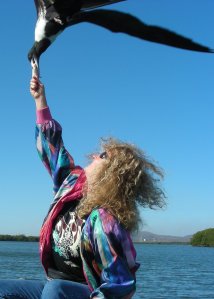And those valuable ties are growing deeper and wider . . . as we TWEET and BLOG and “FRIENDFEED“
According to CrunchBase, “Robert Scoble is an American blogger, technical evangelist, and author. He is best known for his popular blog, Scobleizer which came to prominence during his tenure as a technical evangelist at Microsoft.
According to my Public Relations students at San Francisco State, who were able to engage with him firsthand when he spoke with us Thursday, April 28, he is a true visionary who is leading the exploration of the Social Media Universe.
Here are some of the student comments after Robert’s visit:
- Mita Mahida: “The more stories are repeated, the more this world becomes important. In order to be noticed, you have to be able to create a buzz in your niche market and be able to start conversations because the new form of advertising is engagement.”
- Jeanette Barlow: “I feel that Robert’s main point was to help us feel better about graduating in a recession — not to try so hard to understand the past, but rather to be incorporated into the future. We are in the White Pages, but we need to think about how to get to the Yellow Pages.”
- Theresa Rix: “Robert was a wakeup call. It was mind-blowing that he uses six computer screens, has 90,000 followers on Twitter, and has maxed out on Facebook Friends. He also told us about another blogger who attends every event around the world to build his brand. I have to wonder, What is to come? If this is what it takes to be on top in the social media hierarchy, we need to find new solutions to stay connected to each other. For myself, I can’t imagine building my entire life on the internet without actually meeting and inspiring people IRI. Are we pushing social media in the wrong direction?”
- Ann Marie Pawlicki: “Being a blogger with your status, how do you deal with false information that comes your way and how do you facilitate what you validate as important enough to be on your site, knowing perfectly well of the misleading possibilities that are ever so present in the cyberworld?”
- Chris Gleason: “A blog is the foundation — or home — for a writer. It is a place for followers of one’s Twitter account to get the full story.” -pictured in video
- Alvin Lee: “Until Robert’s discussion, I was unaware of FriendFeed, which is fascinating because of its real-time platform. What amazed me was how many people were commenting and aggregated every second; the cascading comments were surreal to watch. One important utility of FriendFeed is how reoccurring posts jump back to the top of the real-time feed. This feature makes it easy for someone to identify important or newsbreaking topics.”
- Krista McClellan: “The most important idea I gathered was the concept of filters. Robert made it very clear that we should all be focusing on creating filters on our FaceBook, FriendFeed, and Twitter accounts. And that prospective employers would like to see how we organize all this information. He also emphasized the importance of engaging in a niche where we had a real interest and where we could build network, knowledge and reputation within that market.
- James Armfield: “The ability to network can be the key success factor to channeling news and information through the virtual world. After a credible network has been established, then one’s quality of engagement with others in the social media world will bring exponential growth to your current network and lead to a greater network of information.”
In closing this post, I’d like to leave you with a John Naisbitt quote Robert used in his 2006 book co-authored with Shel Israel, Naked Conversations: how blogs are changing the way businesses talk with customers:
“Everything never changes.
Something has changed and it impacts everything else.”
[Disclaimer: That video above was my first “sad” attempt at using the Flip camera. “I am always doing that which I do not know how to do in order to learn to do it.”]
Next post: Jack Dorsey, Twitter creator visits SFSU
 , April 23, 2009
, April 23, 2009